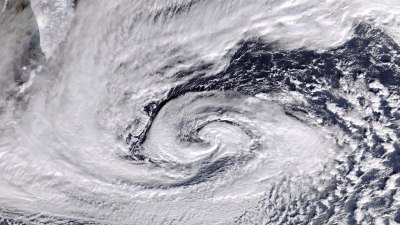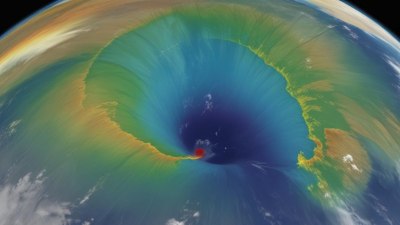Why the Sky Turns Pink at Sunset The Beautiful Science
Discover the fascinating science behind the mesmerizing pink hues of the sunset sky.

The phenomenon of a pink sky at sunset is one of nature's most enchanting occurrences. It's a moment in time where the ordinary transforms into something extraordinary, captivating everyone who takes a moment to gaze at the horizon. The breathtaking shades of pink, orange, and purple that flood the sky invite questions about the mechanics behind this spectacle. In this article, we delve into the science that explains why the sky turns pink at sunset, exploring concepts like light scattering, atmospheric conditions, and the emotional impact of this beautiful display.
Understanding Light and Color
To comprehend why the sky turns pink at sunset, we first need to understand how light interacts with the Earth's atmosphere. Light from the sun appears white, yet it is actually made up of various colors, each with different wavelengths. The visible spectrum includes colors such as red, orange, yellow, green, blue, indigo, and violet. When sunlight passes through the atmosphere, it encounters air molecules and particles that scatter these colors. This scattering is primarily caused by Rayleigh scattering, which is more effective at shorter wavelengths (blue and violet light).
The Role of Rayleigh Scattering
Rayleigh scattering occurs due to the interaction of sunlight with small particles in the atmosphere. During the day, when the sun is high in the sky, the light travels a relatively short distance through the air, leading to the blue light being scattered in all directions. This is why we perceive the sky as blue during the day. However, as the sun begins to set, its light must pass through a thicker layer of the atmosphere, which scatters shorter wavelengths. This increased thickness of the atmosphere allows the longer wavelengths, like red and orange, to dominate the spectrum, producing the stunning pink hues that we associate with sunsets.
Apart from Rayleigh: Mie Scattering
Another type of scattering that comes into play during sunset is Mie scattering. This occurs when sunlight interacts with larger particles, such as dust, water droplets, and pollution in the atmosphere. Mie scattering is less wavelength-dependent, meaning it scatters all wavelengths of light more evenly. This is why sunsets can exhibit a range of warm colors, especially in urban areas or during certain weather conditions. The presence of larger particles can enhance the pink and orange hues, making sunsets particularly vibrant.
Atmospheric Conditions and Their Impact
The intensity and colors of a sunset can greatly vary based on several atmospheric conditions. Humidity, pollution, and cloud cover are significant factors influencing the colors that paint the sky as the sun sets. For instance, high humidity levels can lead to more vibrant sunsets, as moisture can increase the scattering effects of light. Similarly, pollution can enhance the scattering and absorption of specific wavelengths, creating more vivid sunsets. This is why cities often experience breathtaking sunsets, thanks to the particles from vehicles and industry adding richness to the colors.
The Influence of Clouds
Clouds can either enhance or diminish a sunset’s beauty. High-altitude clouds, such as cirrus clouds, can catch the light from the setting sun and reflect a wider spectrum of colors. These clouds can appear vividly illuminated with pinks, purples, and oranges, providing a stunning backdrop for sunset views. Conversely, low-hanging clouds or overcast skies might impede the sunset's colors by blocking the sun's rays altogether. Nonetheless, even on cloudy days, the unique shapes of the clouds can create a dramatic effect, lending a different kind of beauty to the sky.
Location Matters
Your geographical location can significantly influence your experience of sunsets. Areas with less pollution and clearer skies, such as coastal regions or rural landscapes, often enjoy more spectacular sunsets. The ocean itself can create reflecting surfaces that amplify the colors seen in the sky. In contrast, urban locations may experience muted sunsets due to air pollution but can also offer vibrant hues due to particle scattering from human activity. Thus, the best places to observe beautiful sunsets are often those that provide open views of the horizon, away from tall buildings or obstacles.
The Emotional Connection
Sunsets are more than just a scientific phenomenon; they evoke profound emotions and a sense of peace. Many people pause at sunset to reflect on their day and enjoy the transition from light to darkness, finding solace in the beauty of nature. Psychologically, the warm colors of a sunset can invoke feelings of happiness, warmth, and nostalgia. Whether watching a sunset on the beach, at the mountains, or in the city, it often serves as a reminder of the day's end, cultivating a desire for mindfulness and appreciation of the moment. This emotional connection enhances our experience, making sunsets not only a marvel of science but also a cherished part of the human experience.
The pink hues of the sky at sunset are a marvelous interplay of science and nature, showcasing the wonders of atmospheric dynamics. Light scattering plays a crucial role in the colors we observe, influenced by factors such as atmospheric conditions and the presence of particles. Whether one enjoys sunsets for their beauty, the sense of calm they provide, or the scientific intrigue behind them, there is no denying their impact on our lives. Each sunset is a reminder of the transient beauty of nature, encouraging us to pause and appreciate the world around us.











